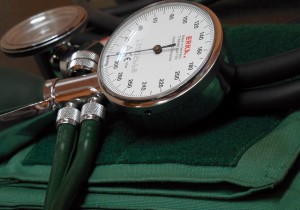The Bayat Foundation is deeply invested in the future of Afghanistan. To create more opportunity for the Afghan people, the foundation spearheads projects in a number of different areas, one of the most critical of which remains healthcare. In recent months, the Bayat Foundation has undertaken initiatives to address hearing loss, improve access to maternity care, and strengthen dentist training.
Over the past few years, the Afghan government has made great strides toward improving the healthcare system in Afghanistan. In the early 2000s, access to medical care was extremely limited, especially in rural areas. Most of the healthcare was provided by non-governmental organizations (NGOs) that worked in an uncoordinated and inconsistent manner. Understanding that healthcare is vital to the future development of the nation, the government partnered with several organizations to raise money to build a more robust system.
Financial support from the Japan Social Development Fund (JSDF) and the Afghanistan Reconstruction Trust Fund (ARTF) helped launch the Strengthening Health Activities for the Rural Poor project. In addition, the World Bank approved a major grant for the Afghan government through the International Development Association (IDA) to create the System Enhancement for Health Action in Transition program, which expands access to services in 22 of the 34 Afghan provinces.
The Growing Need for More Healthcare-Focused Philanthropy
 Even with government and international organizations working to expand services to Afghans in need, there is still much to do. In 2002, Afghanistan had only about 500 healthcare facilities in the entire country. Now, more than 2,280 exist. In addition, more than half of all Afghan people live within an hour of a clinic. At the same time, however, access to specialized care remains scarce, and the few Afghans who can afford to pay out of pocket to travel abroad for such services, do so.
Even with government and international organizations working to expand services to Afghans in need, there is still much to do. In 2002, Afghanistan had only about 500 healthcare facilities in the entire country. Now, more than 2,280 exist. In addition, more than half of all Afghan people live within an hour of a clinic. At the same time, however, access to specialized care remains scarce, and the few Afghans who can afford to pay out of pocket to travel abroad for such services, do so.
The future of healthcare in the nation is jeopardized by the real possibility of reduced aid in the years to come. About 80 percent of funding for Afghan Public Health Ministry comes from international donors, and funding has already dropped in the past year as aid organizations scale back their operations.
While hospitals in many areas of Afghanistan appear modern and provide a high level of care, they continue to struggle with outdated or even broken equipment, and they are severely understaffed. The healthcare system may need to struggle to keep hospitals open instead of focusing resources on expanding access if sources of funding become scarce.
Domestic Support for the Afghan Healthcare System
Continued development of healthcare centers in Afghanistan depends on increased domestic healthcare philanthropy. One Afghan organization that is trying to improve the country’s health system is Afghan Health and Development Services (AHDS). Founded in 1990, this nonprofit, nonpolitical, and non-governmental organization takes a proactive approach to longtime problems and emphasizes empowerment of the Afghan community to help people make better decisions and become more involved with the future of their nation.
To improve healthcare from multiple angles, AHDS is working to expand access to, as well as the quality of, the Afghan healthcare system. In Urozgan, AHDS has created mobile health teams, established service centers at schools, and implemented community-based nutrition education to reduce instances of severe acute malnutrition. In Kandahar, AHDS projects administered vaccinations and provided continuing training for medical facility personnel. In addition, 18 healthcare facilities instituted quality assurance metrics. As a result of these actions, the province reported a decreased incidence of disease, including no new cases of polio.
AHDS has focused much of its efforts on maintaining maternal health and reducing the mortality and morbidity rates of newborns. Through the construction of new and better facilities, the organization has helped lower these figures over the past decade.
One facility the organization created is the Aino Birth Center, which piloted a unique performance-based financing system that emphasizes sustainability of healthcare gains. In remote areas, AHDS offered women free reproductive healthcare services. It also reduced maternal morbidity rates through its reproductive health task force.
AHDS also addresses malnutrition, especially in the first two years of life. The group’s Public Nutrition Policy and Strategy, in effect between 2009 and 2013, did much to raise community awareness about the risks of malnutrition and deliver information about best feeding practices for young children. In the case of acute malnutrition, direct case management helped ensure the best outcomes for affected children.

